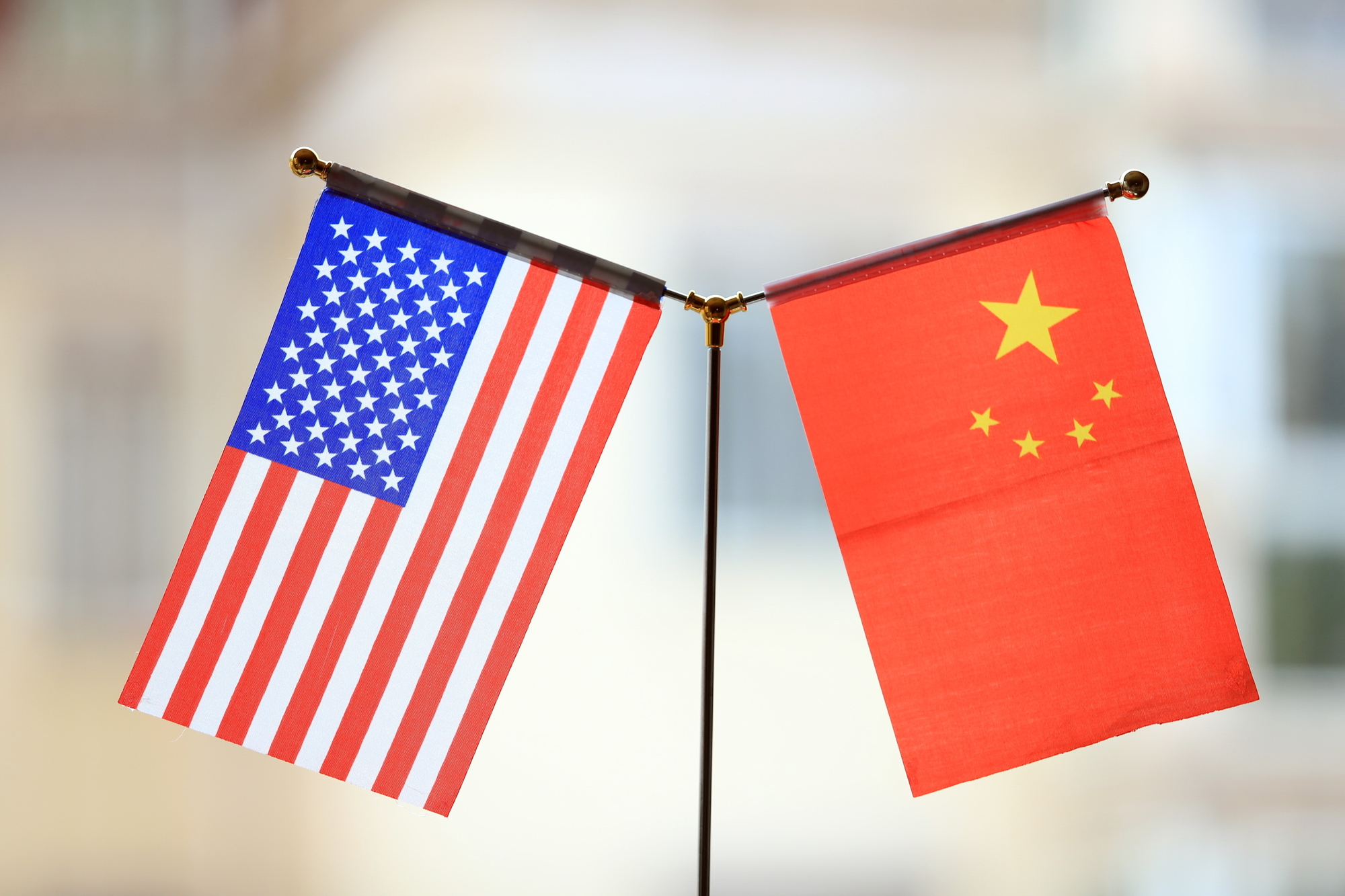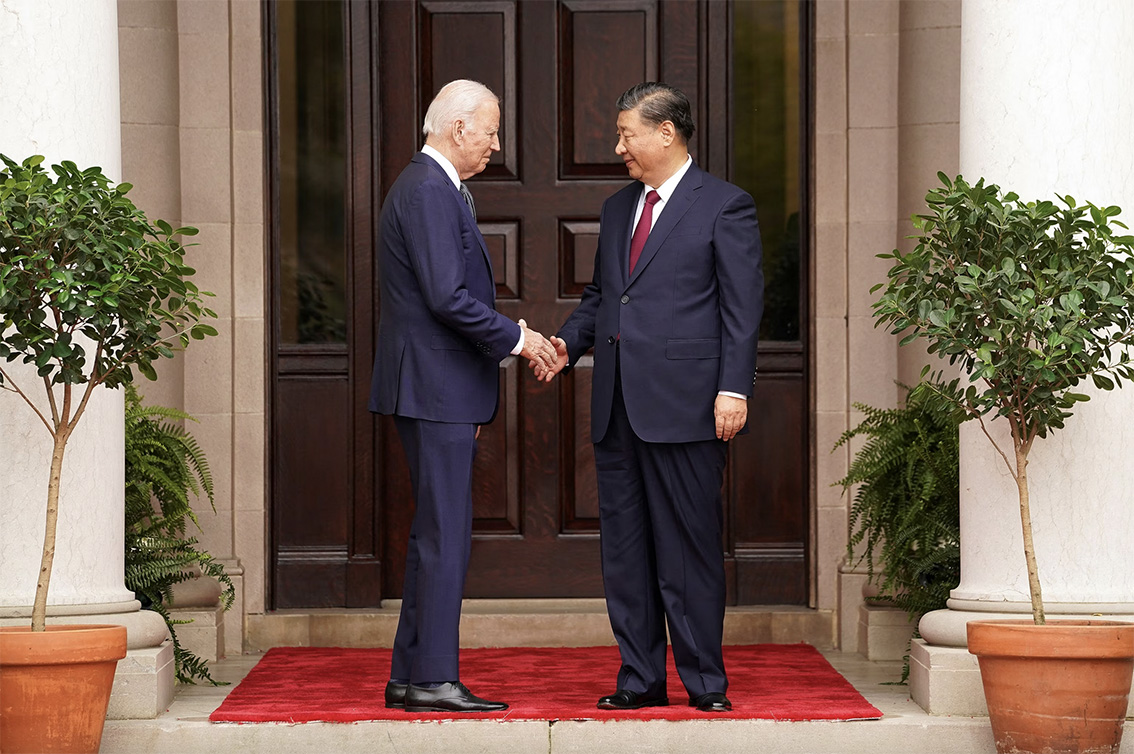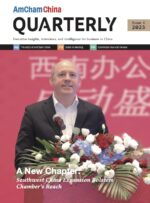Policy+ Breakdown: A Comprehensive Analysis of the Biden-Xi APEC Summit
The Biden-Xi APEC Summit, a historic event held on November 15, 2023, at the Filoli Estate in San Francisco, served as a turning point in the trajectory of US-China relations. This seventh meeting between the two leaders not only reduced existing tensions but also instilled a sense of calm, signifying a commitment to cultivating a more constructive and cooperative relationship.

Photo courtesy of Depositphotos.com
This comprehensive analysis of the Biden-Xi APEC Summit is derived from an exclusive brief sent out to the Chamber’s Policy+ subscribers, a premium service offering timely insights and knowledge to navigate the complex landscape of US-China relations. Policy+ is designed to equip subscribers with the tools needed to make informed decisions under the uncertainties of the geopolitical climate.
Key Agreements: A Foundation for Cooperation
Building upon last year’s Bali meeting, the San Francisco summit resulted in a series of pivotal agreements addressing shared challenges and fostering collaboration. The decision to resume military-to-military communication underscores the commitment to stabilizing defense relations. Simultaneously, the pledge to combat illicit synthetic drug manufacturing, particularly focusing on fentanyl, and the establishment of a working group for ongoing communication and law enforcement coordination demonstrate a joint commitment to counternarcotics efforts.
The agreement to address the risks associated with advanced AI systems signifies a proactive approach to technology governance. By determining specific parameters for AI system development, the two governments aim to ensure responsible and safe innovation in the realm of artificial intelligence.
Furthermore, the commitment to reconnect the people of both countries is highlighted through agreements to expand educational, cultural, and business exchanges. The decision to increase the number of flights early next year and restore the US-China air transportation agreement reinforces the importance of people-to-people connections in fostering mutual understanding.
Both nations also pledged collaboration on global challenges, including health security, debt, climate change, and finance in developing countries and emerging markets. This comprehensive approach reflects the leaders’ recognition of their shared responsibilities as major global powers.

Presidents Biden and Xi shake hands in San Francisco
Photo courtesy of Kevin Lamarque Reuters
US Perspectives on Key Challenges
The US delegation emphasized concerns over unfair trade practices, non-market economic policies, and punitive actions against American companies by the People’s Republic of China (PRC). Despite these challenges, both countries affirmed their commitment to fostering trade and investment while maintaining a de-risking strategy.
In addition to economic considerations, the US reiterated its dedication to protecting allies in the Indo-Pacific region, supporting Ukraine against Russian aggression, and addressing human rights abuses in Xinjiang, Tibet, and Hong Kong. The commitment to the One China policy regarding Taiwan reflects a consistent stance.
Moreover, the US highlighted the importance of preventing the misuse of advanced American technologies in ways that could threaten national security. This cautious approach is coupled with efforts to ensure that trade and investment are not unduly hindered, striking a delicate balance between innovation and security.
Additional Developments and Working Groups
Over the summer, the establishment of working groups gained momentum, indicating a commitment to enhancing cooperation and communication in various sectors. Secretary Yellen’s initiation of two Working Groups between the Treasury Department and the People’s Bank of China, along with the creation of Working Groups by other departments, underscores a multifaceted approach to breaking down barriers and fostering better relations.
The longstanding relationship between President Biden and President Xi, dating back to 2010, remains a crucial channel of communication. This relationship, which has evolved over the years, played a significant role in reducing tensions and fostering a more cooperative atmosphere during the San Francisco summit.
Anticipating future visits and engagements, the commitment to sustaining momentum and connectivity established during the San Francisco meeting sets the stage for ongoing high-level diplomacy and working-level consultations in key areas.
China’s Perspective on Key Challenges
From China’s perspective, the Ministry of Foreign Affairs emphasized its commitment to the peaceful reunification with Taiwan. It urged the US to relax export control restrictions, ease investment limitations, and lift unilateral sanctions on Chinese businesses, signaling an expectation of reciprocity in economic relations.
Differing views on climate change and people-to-people exchange were attributed to different political environments, highlighting the complexity of navigating global challenges within the context of domestic considerations.
“The longstanding relationship between President Biden and President Xi, dating back to 2010, remains a crucial channel of communication.”
Bali vs. San Francisco: Evolution of Discussions
Comparing the Bali and San Francisco meetings provides valuable insights into the evolution of discussions between the two nations. The Bali meeting, occurring three months after then-US House Speaker Nancy Pelosi’s visit to Taiwan, focused on competitive aspects of the US-China relationship. In contrast, the San Francisco meeting was the result of seven months of preparation aimed at reconnecting the two governments and fostering deeper relationships.
Despite enduring and significant differences, both governments agreed on the necessity to coexist peacefully, recognizing the importance of preserving the robust economic relationship established by the business communities in both countries since the late 1970s. The San Francisco meeting created a more advantageous setting for the US and China to manage their differences constructively.
Enhancing People-to-People Connections
The significance of interpersonal connections between US and Chinese citizens was a central theme in both the Bali and San Francisco meetings, underlining the importance of fostering mutual understanding and cultural ties. In Bali, leaders acknowledged the significance of these connections, laying the groundwork for further discussions on how to enhance these ties. Moving forward to the San Francisco meeting, a consensus was reached to bolster people-to-people connections by increasing scheduled passenger flights and promoting broader engagement in various spheres.
Cultural Initiatives and Tourism
Secretary Raimondo and Minister of Culture and Tourism Hu Heping have not only agreed to hold the 14th US-China Tourism Leadership Summit in China but have also set the dates for May 21 to May 23, 2024, in Xi’an. This summit serves as a platform for reviving and developing tourism cooperation between the two countries, providing a valuable opportunity for stakeholders to explore avenues for collaboration in the tourism sector. The Tourism Leadership Summit signifies a commitment to enhancing cultural understanding and promoting travel between the US and China.
On November 22, the US Ambassador Nicholas Burns met with the head of China’s civil aviation regulator, Mr. Song Zhiyong, at an event organized by AmCham China’s Aviation Cooperation Program at Bush House. The two parties exchanged views on pushing for a substantial increase in flights between the two countries. Mr. Song stated that the Civil Aviation Administration of China (CAAC) welcomes US aviation-related enterprises to operate and develop in China. This exchange reflects the mutual commitment to facilitating not only business connections but also fostering greater cultural and interpersonal ties through increased air travel.
Symbolic Gestures of Friendship
President Xi Jinping announced at the Welcome Dinner that China is pleased to send new pandas to the US, symbolizing the pandas as “envoys of friendship” between the two nations. This symbolic gesture reinforces the commitment to cultural exchange and serves as a reminder of the historical friendship and collaboration between the US and China. The presence of Captain Harry Moyer, a veteran member of the Flying Tigers from WWII, at the Welcome Dinner further underscores the historical ties between the two nations and emphasizes the ongoing importance of these cultural and diplomatic connections.
Looking Ahead: A Commitment to Continued Diplomacy
The leaders affirmed their commitment to building on the understandings reached in Bali and San Francisco through continued high-level diplomacy. Ongoing working-level consultations will cover key areas, including commercial, economic, financial, Asia-Pacific, arms control, nonproliferation, maritime, export control enforcement, policy-planning, agriculture, and disability issues.
Upon reflection, the Biden-Xi APEC Summit in San Francisco not only marked a significant milestone in US-China relations but also laid the groundwork for more constructive cooperation across various domains. The expanded agreements and initiatives outlined above reflect a comprehensive approach to managing differences, fostering collaboration, and promoting a healthier and more stable relationship between the two global powers. As the leaders look ahead, the emphasis on continued dialogue and engagement sets a more hopeful tone for the future of US-China relations.

This article is from the AmCham China Quarterly Magazine (Issue 4, 2023). To access the entire publication for free, sign up on our member portal here.

